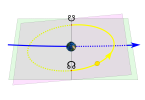Basketball is a sport that requires a lot of physical activity and movement. One of the most important movements in basketball is running, but running isn’t the only way to move around the court. Another important movement is taking steps, which is necessary to move the ball around the court and to score points. But how many steps can you take in basketball?
The answer to this question is not as simple as you might think. In general, basketball rules state that you are allowed to take two steps after you have stopped dribbling the ball.
However, there are some exceptions to this rule, and it can be difficult to determine exactly how many steps you are allowed to take in certain situations.
In this article, we will explore the rules around steps in basketball and provide you with a clear understanding of how many steps you can take in different scenarios.
Understanding the Rules of Basketball
Basketball is a popular sport played all over the world. It is a high-energy game that requires players to run, jump, and shoot. But before you can start playing, it is essential to understand the rules of the game.
Scoring Points
In basketball, the objective is to score points by shooting the ball into the opponent’s basket. Each basket is worth two points, but if the shot is taken from beyond the three-point line, the basket is worth three points.
If a player is fouled while shooting and makes the basket, they are awarded one free throw. If the free throw is made, the player is awarded one point.
Number of Steps
One of the most important rules of basketball is the number of steps a player can take with the ball. When you receive the ball, you are allowed to take one step before dribbling.
After that, you can take two additional steps before you must pass the ball or shoot. If you take more than three steps, it is considered a travel, and the ball is given to the other team.
Violations
In addition to traveling, there are other violations in basketball that can result in a turnover. These include:
- Double Dribble: When a player dribbles the ball with both hands at the same time or stops dribbling and then starts again.
- Carrying: When a player holds the ball too long in one hand and moves or dribbles the ball with the other hand.
- Out of Bounds: When the ball goes out of bounds, either by bouncing off a player or by a player stepping out of bounds while holding the ball.
The Movement Basics
When it comes to basketball, movement is key. Knowing how many steps you can take and how to move properly can make all the difference in your game. Here are the basics you need to know:
Pivot Foot
The pivot foot is the foot that stays in place while the other foot moves. This foot is crucial in maintaining your position on the court. You can pivot on one foot as many times as you want, but once you lift it, you can only take one step before you have to dribble or pass the ball.
Two Steps
After you catch the ball, you are allowed to take two steps without dribbling. This is often referred to as the “gather step.” These steps can be taken in any direction, but once you pick up the ball for the second step, you must pass or shoot, or it will be considered a travel.
Jump Stop
A jump stop is a great way to maintain control of the ball and avoid traveling. You can take as many steps as you want before jumping off both feet and landing on both feet simultaneously. This is considered a legal move as long as you release the ball before your feet touch the ground again.
Euro Step
The Euro step is a popular move that allows you to take an extra step before shooting or passing. To perform a Euro step, take a step in one direction and then quickly step in the opposite direction with your other foot. This move can be effective in confusing defenders and creating space for a shot.
By mastering these movement basics, you can improve your game and become a more effective player on the court.
The Dribbling Rule
When it comes to dribbling in basketball, there is a specific rule that limits the number of steps you can take while dribbling. This rule is known as the “gather step” rule.
According to this rule, you are allowed to take one additional step after you have picked up your dribble. This step is known as the gather step, and it is designed to give you a better chance to make a pass or take a shot.
However, it is important to note that the gather step is not a license to take multiple steps without dribbling. If you take more than one step after picking up your dribble, it will be considered a travel, and the ball will be turned over to the other team.
To help you understand this rule better, here are a few key points to keep in mind:
- You are allowed to take one additional step after picking up your dribble.
- This step is known as the gather step.
- The gather step is designed to give you a better chance to make a pass or take a shot.
- Taking more than one step after picking up your dribble will result in a travel.
- A travel will result in a turnover, giving the ball to the other team.
Overall, it is important to understand the dribbling rule in basketball to avoid committing a travel and turning the ball over to the other team.
With practice and understanding, you can become a skilled dribbler and make the most of your gather step to make successful passes and shots.
Steps in Different Scenarios
Receiving the Ball
When you receive the ball in basketball, you are allowed to take one step to establish a pivot foot. This pivot foot cannot be lifted off the ground until you have released the ball. If you want to move in a different direction, you must pivot on your pivot foot and then take your step.
After Dribbling
If you have stopped dribbling the ball, you are allowed to take two steps before you must pass or shoot the ball. The first step must be taken with your non-pivot foot, and the second step can be taken with either foot. If you take more than two steps, it will be considered a travel violation.
During a Pivot
When you have established a pivot foot, you are allowed to pivot on that foot as many times as you want without dribbling or moving your other foot.
You can also step with your non-pivot foot as long as it does not leave the ground. If you lift your pivot foot or move it, it will be considered a travel violation.
In summary, the number of steps you can take in basketball depends on the scenario. When receiving the ball, you can take one step to establish a pivot foot. After dribbling, you can take two steps before passing or shooting the ball.
During a pivot, you can pivot on your pivot foot as many times as you want and take a step with your non-pivot foot as long as it does not leave the ground. Remember to follow these rules to avoid travel violations and keep the game fair.
Violation Consequences
In basketball, there are rules that govern the number of steps a player can take while in possession of the ball. These rules are designed to ensure fair play and prevent players from gaining an unfair advantage. If a player violates these rules, there are consequences that can result in a turnover or a foul.
Traveling
One of the most common violations in basketball is traveling. This occurs when a player takes more than two steps without dribbling the ball. If you travel, the referee will blow the whistle and the opposing team will be awarded possession of the ball. This is known as a turnover.
Carrying
Another violation that can result in a turnover is carrying. This occurs when a player dribbles the ball and then catches it with the same hand before dribbling again. If you carry the ball, the referee will blow the whistle and the opposing team will be awarded possession of the ball.
Three-Second Violation
The three-second violation occurs when an offensive player remains in the key for more than three seconds. The key is the rectangular area under the basket. If you violate this rule, the referee will blow the whistle and the opposing team will be awarded possession of the ball.
Double Dribble
Double dribbling is another violation that can result in a turnover. This occurs when a player dribbles the ball with two hands or dribbles, stops, and then dribbles again. If you double dribble, the referee will blow the whistle and the opposing team will be awarded possession of the ball.
In conclusion, violating the rules regarding the number of steps a player can take in basketball can result in a turnover or a foul. It is important to understand these rules and play within them to ensure fair play and a level playing field for all players.
Common Misconceptions
When it comes to basketball, there are several misconceptions about how many steps you can take during a game. Here are a few common ones:
- You can take as many steps as you want before dribbling the ball. This is false. In basketball, you are only allowed to take two steps after picking up your dribble. Any additional steps will result in a traveling violation.
- You can take more than two steps if you are in the act of shooting. While it may seem like players take more than two steps when driving to the basket, they are actually taking two steps and then jumping off of one foot to shoot. This is known as the “gather step” and is allowed in basketball.
- You can take more than two steps if you are pivoting. This is also false. While you can pivot on one foot as many times as you want, you are only allowed to take one step after pivoting before you must pass or shoot the ball.
- You can take more than two steps if you are avoiding a defender. This is a common misconception, but it is not true. You are only allowed to take two steps after picking up your dribble, regardless of whether or not you are avoiding a defender.
It is important to understand the rules of basketball to avoid committing traveling violations and other fouls. Knowing how many steps you can take is a fundamental part of the game, and can help you become a better player.
Conclusion
In conclusion, the number of steps you can take in basketball depends on the situation. The rules of basketball state that you are allowed to take two steps after gathering the ball, but there are exceptions to this rule. It is important to understand the rules and regulations of basketball to avoid committing a traveling violation.
During a fast break, you may take more than two steps to get to the basket. However, you must release the ball before your third step. In addition, if you receive the ball while in motion, you are allowed to take one additional step before gathering the ball.
It is also important to note that referees may interpret the rules differently. What one referee may consider a legal move, another may consider a violation. Therefore, it is crucial to practice good footwork and understand the rules of basketball to avoid any confusion or penalties.
Overall, understanding the rules and regulations of basketball is crucial to playing the game effectively and avoiding violations. By practicing good footwork and staying up-to-date on the rules, you can improve your game and avoid committing traveling violations.







